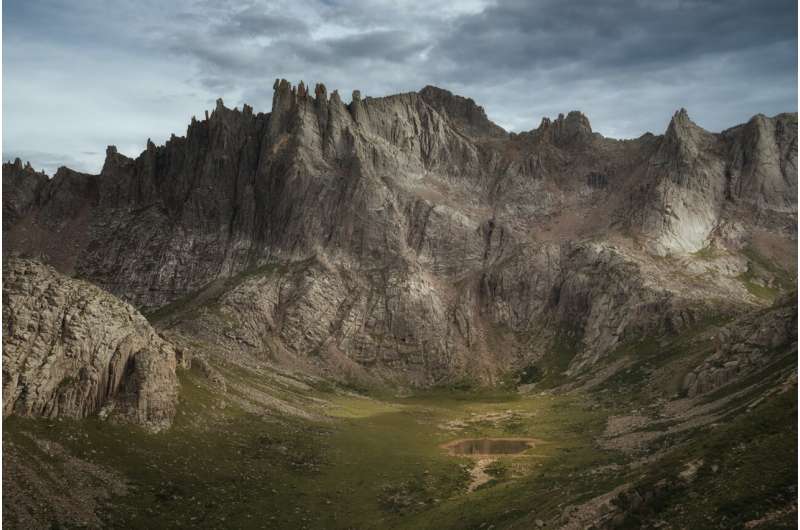This article has been reviewed according to Science X's editorial process and policies. Editors have highlighted the following attributes while ensuring the content's credibility:
fact-checked
trusted source
proofread
Environmental disturbance influences stability of permafrost peatland carbon pool

Researchers from the Northeast Institute of Geography and Agroecology (IGA) of the Chinese Academy of Sciences have revealed the effects of environmental disturbances on the chemical stability of the peatland carbon pool in the northern Great Khingan Mountains currently and during the last millennium.
The results were published in Biogeochemistry and Catena.
Carbon capture and sequestration of natural ecosystems is an important ecological function that partially neutralizes anthropogenic CO2 emissions and slows down global warming. Permafrost peatlands, which cover nearly 20% of the permafrost areas, store nearly 50% of soil carbon of the permafrost ecosystem, equal to nearly 10% of the global terrestrial soil carbon pool.
In 2019, the United Nations Environment Program (UNEP) mentioned that the loss of the carbon sink function of the permafrost peatlands had become one of the five key emerging issues of environmental concern globally. Permafrost peatlands in the northern Great Khingan Mountains located at the southern edge of the global high-latitude permafrost area and the carbon pool are highly vulnerable to climate change and other environmental disturbances.
The results showed that nutrients (e.g., available K, available P) were the key factors affecting chemical properties of organic matter in surface peat soils. The contents of these nutrient elements had a positive correlation with contents of aromatic and total carbon, and a negative correlation with carbohydrate contents.
Because the difference in nutrient contents of different vegetation communities was not significant, the changes of vegetation communities caused no significant difference of the carbohydrate and carbon contents.
During the last millennium, local precipitation and fire events may be the two major environmental disturbance factors driving the varying stability of carbon pools in different permafrost peatlands.
Especially, at 250–200 cal yr BP, intense fire events may have promoted herb growth and high carbohydrate content in the accumulated plant litter, which ultimately produced higher carbohydrate and lower aromatic contents in the Jintao (JT) peatland than nearby periods, which were also higher than those in Hongtu (HT) peatland.
"Our results suggested that the chemical stability of permafrost peatlands carbon pool have close related to the environmental disturbance factors, and the environmental disturbance cause the stability of permafrost peatlands carbon pool more vulnerable," said Dr. Gao Chuanyu, co-corresponding author of the study.
More information: Jinxin Cong et al, Changes in organic matter properties and carbon chemical stability in surface soils associated with changing vegetation communities in permafrost peatlands, Biogeochemistry (2023). DOI: 10.1007/s10533-023-01028-9
Jinxin Cong et al, Historical chemical stability of carbon pool in permafrost peatlands in northern Great Khingan Mountains (China) during the last millennium, and its paleoenvironmental implications, CATENA (2021). DOI: 10.1016/j.catena.2021.105853
Provided by Chinese Academy of Sciences



















